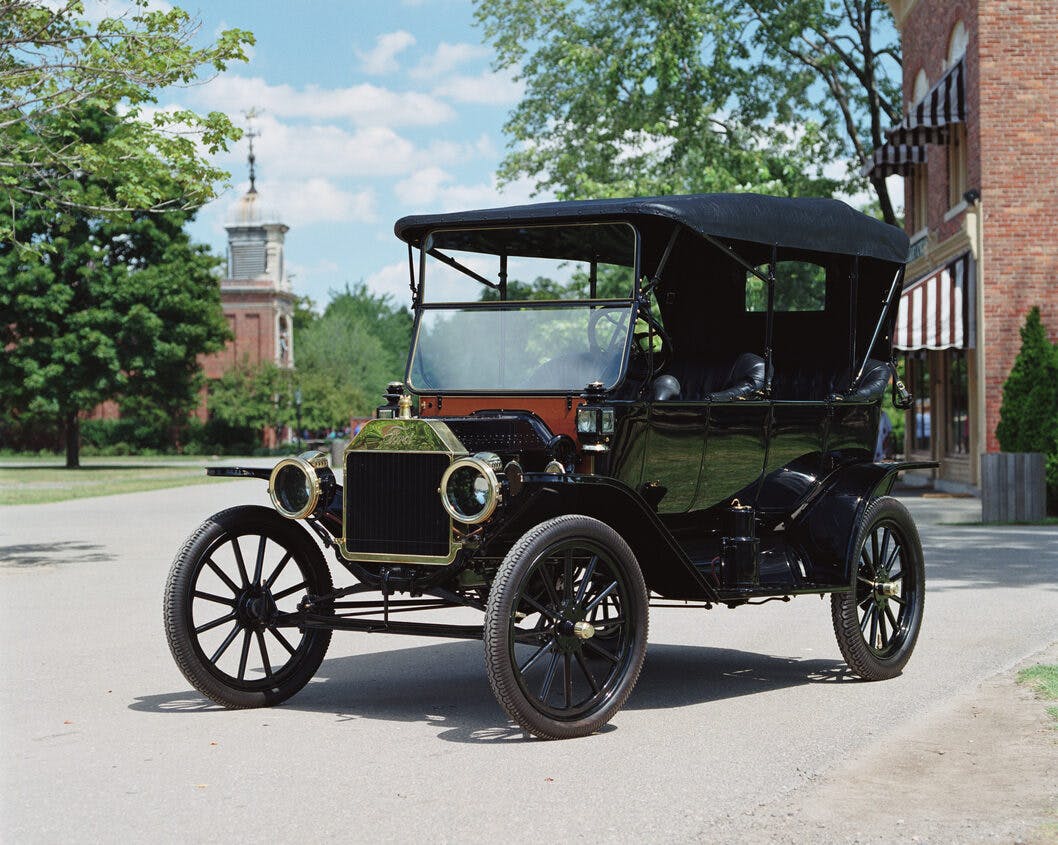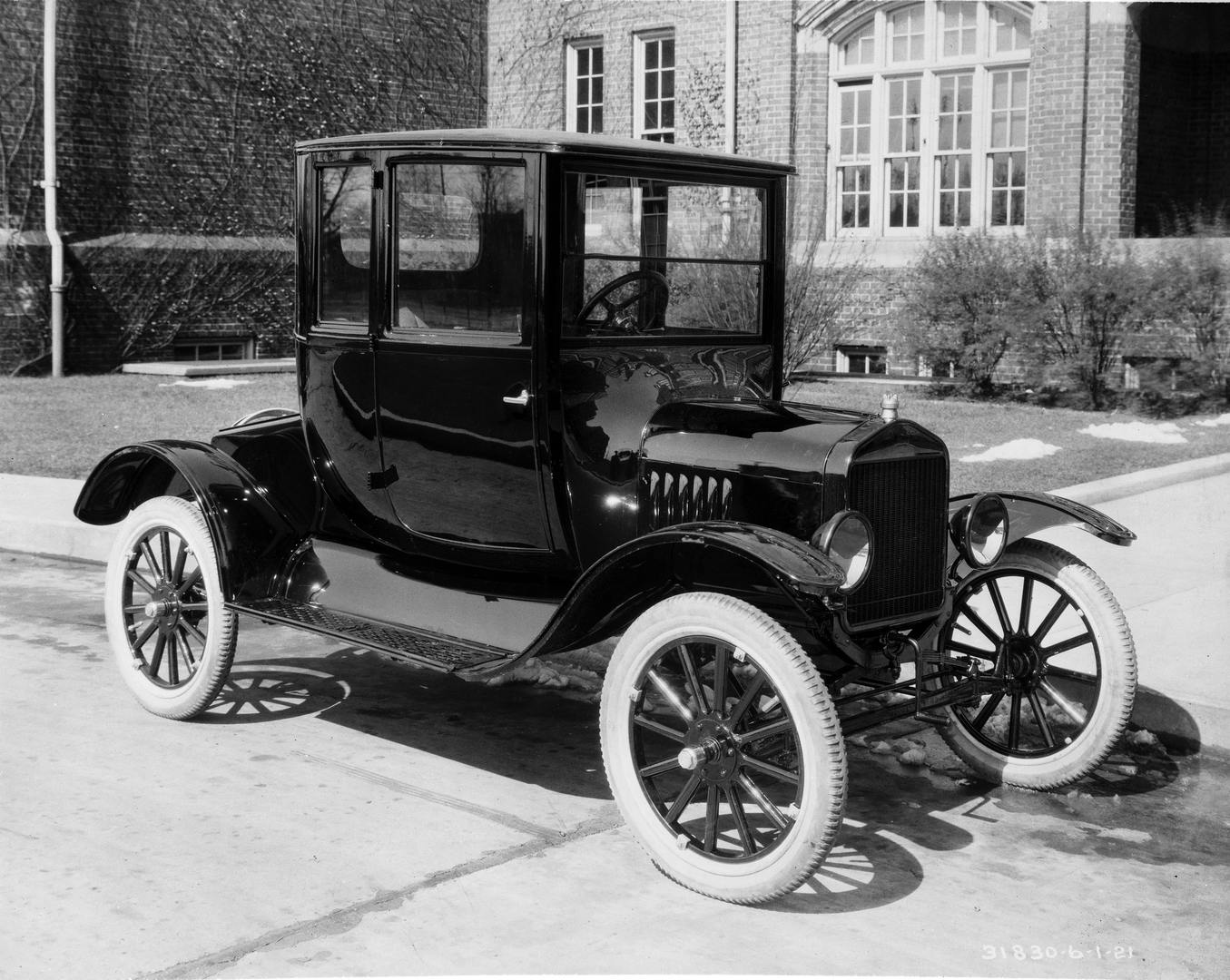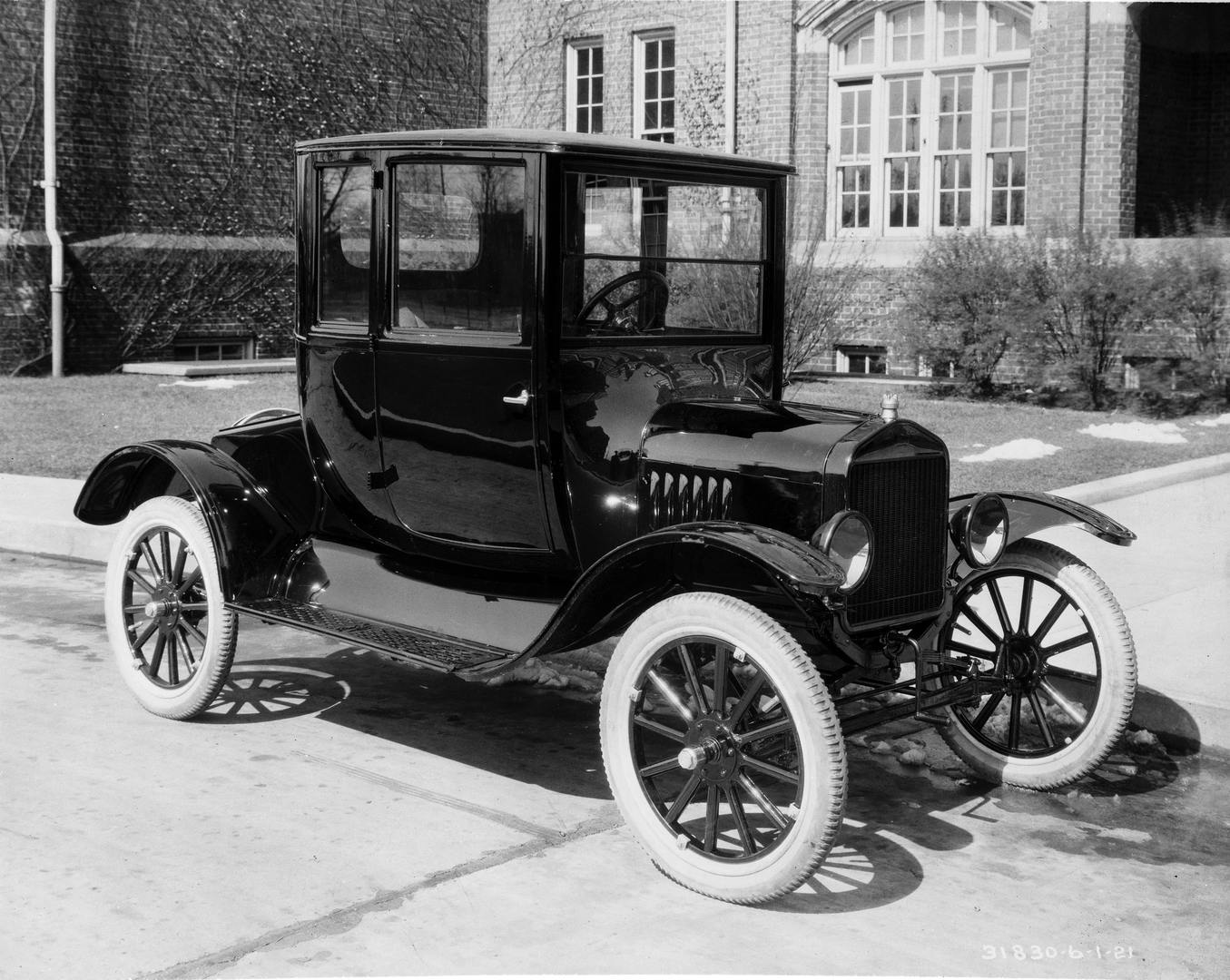Media | Articles
Ever popular, the Model T keeps chugging along
Few American cars have influenced history like the Model T Ford. This is the car that in its day was much more than a car: it put the U.S. on wheels and at one point had 61 percent of the overall automotive market. Times change though, and while more than 15 million Model Ts permanently altered how Americans went about their travel, the Model T faces a new challenge 115 years after its introduction: maintaining its relevance in the collector car world.
The Model T was born after a string of what is now known as the “alphabet cars.” Henry Ford and his team were innovating quickly, so naming convention may well not have been at the top of the list as they tested and evolved the automobile in search of the recipe that would change the world. Henry Ford was personally involved in the iterative process, and it was only after he put a Model T to the test on a hunting trip to Wisconsin and northern Michigan that it got his seal of approval.
With the T, they finally had the right product, and deliveries began in October of 1908. To the consumer, who up to that point had been cautiously getting a taste of the automobile, the Model T was the perfect porridge: affordable, simple, and comparatively reliable.
The Model T’s overwhelming success enabled its longevity, even in the face of competition that was swiftly catching up. It’s long been recounted that Henry Ford put up a stiff fight to the idea that Ford Motor Company should leave the Model T behind and advance to a new car, resulting in a long 1908–1927 production run. 1920s auto market dynamics aside, the result for the collector is a still-healthy array of Model Ts in a variety of configurations.
The T chassis accommodated multiple body styles, ranging from multi-row open touring cars to enclosed two-seat coupes, and even pickup trucks. Each has its use-based differences—the trucks are sprung for heavy loads while the cab used for the touring models prioritizes seating area. Any model is perfect for parades or tours on secondary roads, but the touring does offer the most versatility and usable space. Over six million touring-bodied Model Ts were produced—more than any other body style—but its popularity today matches its popularity from the roaring ’20s, and as a result the open touring still commands a premium.
Considering the length of its production run and the body styles available, the relative few changes made over the Model T’s life can feel surprising. The notion that all Model T’s were painted black, stemming from the famous Henry Ford quote was true, at least from 1914–25. It was in fact an effort to simplify the production process. However, Model Ts made before or after that window had color options including green, red, gray, and blue. Another change during Model T production was the addition of an electric starter. A “standard” T required the driver or passenger to stand in front of the car and use a crank start to turn the crankshaft manually till the engine started. According to varying sources, the electric starter became an option for open cars and standard in closed-cab Model Ts in 1919.
That electric start makes the car sound more modern, but the experience of driving what many call a Tin Lizzie is radically different than any vehicle produced after the invasion of Normandy. There are three pedals, but they don’t operate in the way you’re accustomed to. In order from left to right you have the high/low clutch, reverse pedal, and then the brake pedal. Two stalks placed on either side of the steering wheel control the ignition timing and throttle. The high/low pedal is set up to allow the driver to “float neutral” by holding the pedal in the center of its range. From there pressing down engages first gear in the planetary transmission, and releasing it completely engages high gear. It’s not that much different from some garden tractors today, except a Model T will putter down the road at 35 mph.

Driving a T feels overwhelming at first, with an abundance of controls that seem to require attention. In reality, it’s relatively straightforward—the timing lever is more or less set-and-forget once started, and your left foot controls forward motion while your right tends to the brakes and reverse. Most drivers familiar with driving a manual transmission can pick up the process and become competent in a short time. Henry Ford’s original design brief of being simple to operate still holds true even in an era where drivers have been increasingly disconnected from the car.
The steering is a quick ratio and the chassis is designed to flex, so the amount of body roll can be disconcerting at first. Once you’re used to that and offer the T smooth inputs, you’re rewarded with a capable, old-time treat as a mellow chuff, chuff, chuff comes from the single small exhaust under the car.
Thanks to the sheer volume of Model Ts out there, prices have long been relatively flat, though recent history has disrupted that. The momentary uptick in values during the pandemic has receded, and while #1 (Concours) and #2 (Excellent) condition cars appear to have found their footing slightly below their prior plateau, #3 (Good) and #4 (Fair) condition Model Ts currently sit slightly above 2020 values. The Model T is one of those collector vehicles with enough examples out there at any given time that if the prices start to trend up there will always be sellers primed to take advantage and thus drive the price back down.
As might be expected for a car of this vintage, boomers and pre-boomers are just under 60 percent of active buyers of the Ford Model T, as measured by Hagerty’s insurance quotes. Gen-X holds a 28 percent share, but perhaps most compelling is the growing level of interest from millennials and Gen-Z. In 2020, the two youngest cohorts of collectors made up 9.27 percent of quotes sought for Model Ts. Today, that number stands at 13.25 percent. While not dramatic, any indication that younger generations are gravitating toward the Tin Lizzie bodes well, not just for values, but for continuing to see these cars on the road.
A Model T rarely makes sense as one’s only vintage vehicle, but when added to a collection it can become a novelty that is fun, dependable, easy to repair, and has benefit of a community with tons of knowledge and support to keep it running and on the road. The Model T is the perfect car on which to tinker and learn, and to take out on special occasions. Though it’s not as functional as a more modern classic, to think of it that way misses the appeal of its altogether different driving experience.
Events for cars like the Model T are another part of the ownership draw. Whether it’s more traditional like the Old Car Festival at the Henry Ford Museum, or a mustachioed revival of old-timey racing put on at The Race of Gentlemen, there are plenty of get-togethers enticing younger buyers to search for aging iron.
Baby boomer and pre-boomer generations still hold nearly 75 percent of all Model Ts, but with younger generations moving in, the Model T’s place—not just in history, but on the road, where it belongs—remains safe for the foreseeable future.
***
Marketplace
Buy and sell classics with confidence
Check out the Hagerty Media homepage so you don’t miss a single story, or better yet, bookmark it. To get our best stories delivered right to your inbox, subscribe to our newsletters.









I believe our local museum, WAAAM, in Hood River, OR still offers Model T driving classes on occasion. Also, our local newspaper’s Years Ago column recently featured a report from the 1920’s. The town was going to paint parking spaces downtown to encourage people to parallel park. They made the point that all spaces would be the same size so that “Lizzies and Stars” would use the same spaces as Cadillacs and some other luxury brand.
Because of the peculiarities of driving a T with the planetary trans, I’d not recommend it as a car to learn on. It’s simple, but also totally unfamiliar to almost all drivers (unless you’ve been around Ts a lot…). A Model A would be a better choice for the simplest car to learn on. Most of it would still apply to a modern car.
The North Carolina state magazine this month had a series of articles on “tours,” and one of them is in a Model T. “Mountaineer Motor Tours” conducts local explorations of Asheville, with driver/tour guide in period costume. The car pictured in the article is a ’23 touring car. Very cool.
I’m a sheet metal worker and I have reskinned over seven hundred Model T bodies. I get most of the work from my good friend Ray Wells who is a traditional coach builder. He tells me he’s built over two thousand bodies and has shipped them all over the world. We’re currently building a 1914 touring, a 1917 touring, a1912 commercial roadster with mother in law seat and a 1925 roadster. Love the Model T.
I am the senior instructor at the Gilmore Museum Model T Driving school. I have finally retired from teaching at age 98, but, I still have my 1926 Model T fordor which I drive quite a bit. I really encourage all of you who have any spirit of adventure get to Gilmore and take the course. I promise YOU WiII HAVE A BALL!!!! Go online to Gilmore Car Museum and register. They are about to wind up classes for 2023 but around the first of the year 2024 classes will be announced. That includes all you ladies. You will probably do better than the men. I know that after 10 years of being an instructor. You do not need a Model T to take the class, but, after the class you may want to buy one! (You do the math. I’m older than my Model T)
The beauty of the “T”and also with the 1928 to 31 “A” is that between the many support clubs nationwide along with the Snyder’s catalog, they can be kept on the road practically in perpetuity. Long live these wonderful machines.
my dad would tell about an old car, I think he called it “apperson jackrabit”. It had the same “Kitty Car” steering as a “T”. He said one night at a bar, they some how flopped the steering upside down, and then to turn right, you turned the wheel left and vise versa. He said the drunk owner got in and drove home with out even noticing.
I’m signed up to take a 4 hour lesson this Fall at the AACA Museum in Hershey PA… a bday gift to myself. “ When you participate in the Model T Driving Experience, you will get four hours with an experienced instructor behind the wheel, learning the ins and outs of driving a Model T. This program will begin with some classroom instruction, followed by hands-on learning behind the wheel of not one, but SEVERAL of the AACA Museum, Inc. Model T automobiles.”
I’m the (retired at 98) senior driving instructor at Gilmore Car Museum. I had three Model T’s in high school upon which I started my lifelong fun with cars. I have one Fordor Model T in my barn along with a T owned by my daughter and son-in-law. We put many miles on them every year. I still do most of my own repairs. I encourage everyone, if you want to a lot of fun and learn about Model T Ford’s, sign up for Gilmore Car Museum’s driving class. The sign-up is on their website.